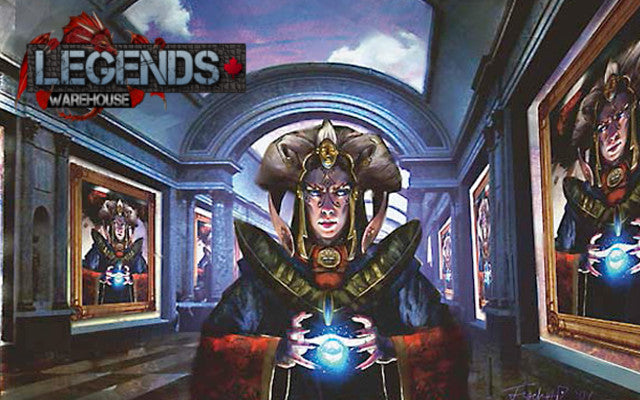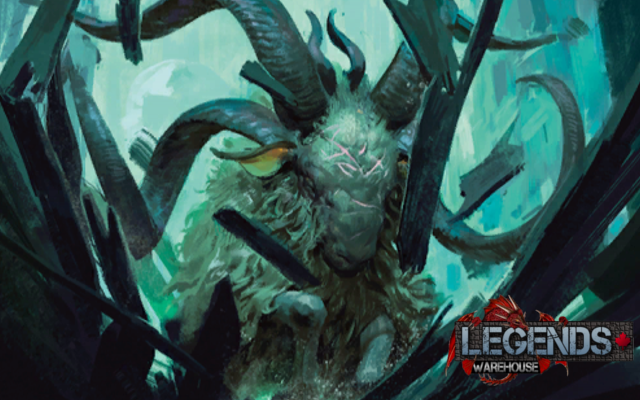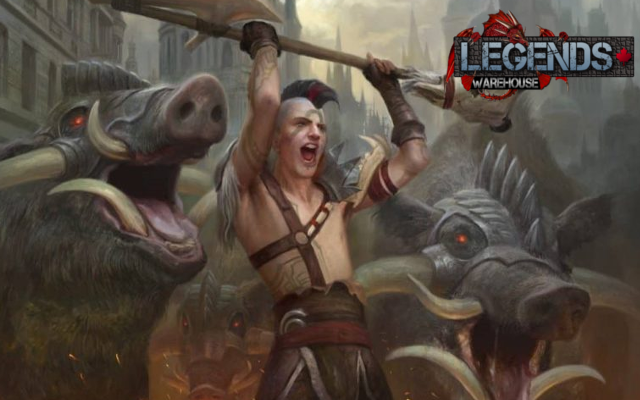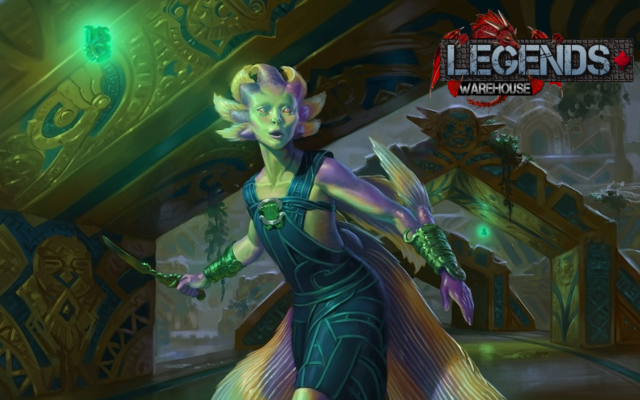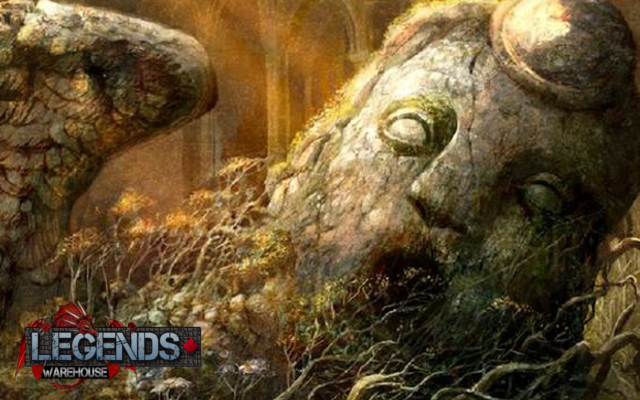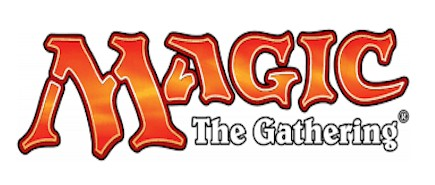The Planeswalker Rule and You
- Legends Warehouse News
- 05 Sep, 2017
Ixalan is a world of exciting tribal synergies both new and old. There’s Dinosaurs! Pirates! Vampires! Merfolk! And...planeswalkers? One of the biggest announcements in the Ixalan mechanics breakdown is that starting with this set, all planeswalkers past, present, and future will now be legendary. So what exactly does this mean? In the past, one of the biggest hindrances to planeswalkers is that you could only control one planeswalker of each type at a time. This was done to balance out that you were effectively getting free effects every turn, so having too many going on at once was too powerful. However, in the ten years that planeswalkers have been a card type, the number of available planeswalker cards has increased exponentially. As such, you would often run into the problem of certain planeswalkers pushing out others of the same type because they were slightly better, thus rendering these “lesser” walkers useless in competitive play.
ten years that planeswalkers have been a card type, the number of available planeswalker cards has increased exponentially. As such, you would often run into the problem of certain planeswalkers pushing out others of the same type because they were slightly better, thus rendering these “lesser” walkers useless in competitive play.
This also isn’t the first time the planeswalker rule has evolved. For quite some time if your opponent had a planeswalker such as Jace, the Mind Sculptor, you could play a Jace planeswalker of your own, like Jace Beleren, to kill it. This was similar to the legend rule at the time, so it sort of made sense flavour-wise. There could only be one Jace in play at a time, even if it meant using a smaller one as Vindicate, or Vindi-Jace as the cool kids used to say. Unfortunately this also led to the problem of entire games being dictated by who was able to play Jace, the Mind Sculptor first to get that crucial Brainstorm. This was eventually remedied in M14 when they changed it so the “uniqueness” rule would only apply to individual players. You couldn’t use a Jace to kill a Jace, but you could at least play your own and use its abilities if you played yours second. It just meant that you couldn’t control two different Jaces at once.
All this changes with Ixalan, of course, with Jace, Cunning Castaway as the first spoiled Legendary planeswalker. Now planeswalkers won’t have to compete for deck slots with others of the same type, which was the downfall to many a Chandra, Jace, and Gideon. One unfortunate aspect of the Gatewatch was that there were so many of these five planeswalkers printed that if they weren’t the most streamlined version they would see much less play, such as Gideon, Martial Paragon or Chandra, Flamecaller. As a result, you would see one dominant planeswalker, usually the cheapest to cast, rise to the top while the others clog up trade binders worldwide.
Legendary planeswalker. Now planeswalkers won’t have to compete for deck slots with others of the same type, which was the downfall to many a Chandra, Jace, and Gideon. One unfortunate aspect of the Gatewatch was that there were so many of these five planeswalkers printed that if they weren’t the most streamlined version they would see much less play, such as Gideon, Martial Paragon or Chandra, Flamecaller. As a result, you would see one dominant planeswalker, usually the cheapest to cast, rise to the top while the others clog up trade binders worldwide.
Now we can truly embrace what was jokingly called “Planeswalker tribal” decks, where you can run multiple iterations of the same planeswalker and get multiple effects every turn. Gideon tribal was a joke in early Amonkhet since there were three Standard-legal Gideons at the same time,  and it even evolved into a moderately successful Modern archetype when Gideon Jura was included. Where this deck stumbled was that you could only have one Gideon in play at a time, so when you played the deck your hand would always get clogged with superfluous Gideon cards, making it an incredibly risky deck to pilot. With this rules change the deck has the means to expand beyond its previous limitation and actually become a decent threat in the Modern metagame. Can you imagine having a Gideon of the Trials emblem active and having to deal with destroying that Gideon, Gideon, Ally of Zendikar, and Gideon Jura at the same time? Or having those three attacking for a combined 15 damage a turn? Barring some planeswalker-specific board wipes akin to Hour of Devastation, this is going to cause major headaches for your opponents.
and it even evolved into a moderately successful Modern archetype when Gideon Jura was included. Where this deck stumbled was that you could only have one Gideon in play at a time, so when you played the deck your hand would always get clogged with superfluous Gideon cards, making it an incredibly risky deck to pilot. With this rules change the deck has the means to expand beyond its previous limitation and actually become a decent threat in the Modern metagame. Can you imagine having a Gideon of the Trials emblem active and having to deal with destroying that Gideon, Gideon, Ally of Zendikar, and Gideon Jura at the same time? Or having those three attacking for a combined 15 damage a turn? Barring some planeswalker-specific board wipes akin to Hour of Devastation, this is going to cause major headaches for your opponents.
But Gideon isn’t the only planeswalker to benefit from this new change. Because there’s only so much design space that fits certain planeswalkers mechanically, WotC tends to double down on abilities for those characters. It’s why Gideon always becomes a creature, Sarkhan always interacts with dragons, and Tibalt always sucks. As a result you can compound the effects of these planeswalkers by using them in tandems with other planeswalkers of the same type. Of all the planeswalkers to benefit from the new change, I believe Liliana, Tezzeret, Chandra, and Elspeth also stand to gain the most for Constructed play.
Liliana planeswalkers have been a staple of Modern and Legacy since Liliana of the Veil was printed back in Innistrad. But because Liliana of the Veil was so powerful, she quickly pushed every other Liliana planeswalker out of contention. It took another three mana planeswalker like Liliana, the Last Hope to threaten her position, but even still Liliana of the Veil is regarded as the de facto Black planeswalker. With this new rule, we no longer have to choose between the Veil and the Last Hope, and running these two in tandem can create some seriously powerful interactions. Liliana, the Last Hope thrives against small creatures like Goblin Guide and Signal Pest that can pressure Liliana of the Veil, whereas the Veil can ruin slower midrange and control decks that otherwise wouldn’t care about the Last Hope. These two form a perfect tag team that I predict will be a serious threat in Modern and Legacy for quite some time.
was printed back in Innistrad. But because Liliana of the Veil was so powerful, she quickly pushed every other Liliana planeswalker out of contention. It took another three mana planeswalker like Liliana, the Last Hope to threaten her position, but even still Liliana of the Veil is regarded as the de facto Black planeswalker. With this new rule, we no longer have to choose between the Veil and the Last Hope, and running these two in tandem can create some seriously powerful interactions. Liliana, the Last Hope thrives against small creatures like Goblin Guide and Signal Pest that can pressure Liliana of the Veil, whereas the Veil can ruin slower midrange and control decks that otherwise wouldn’t care about the Last Hope. These two form a perfect tag team that I predict will be a serious threat in Modern and Legacy for quite some time.



In a similar vein, Tezzeret decks in Modern and Legacy have almost always tended to skew toward Tezzeret, Agent of Bolas because of its cheaper mana cost and its more aggressive -1 ability. Tezzeret the Seeker has typically seen more play in Commander and Vintage due to his tutoring ability, with only the most fringe Modern decks giving him a shot. Under the new rules, a Tezzerator deck can run both versions so you can tutor for artifacts with the Seeker then turn them into 5/5s with Agent of Bolas, or dig for artifacts with tap abilities with Agent of Bolas, use them, then untap them with the Seeker. Being able to abuse both of these similar effects every turn can be incredibly potent, allowing you to run far more one-ofs than the more current Tezzerator decks do. All this may very well be enough to carve a spot in the metagame for Tezzerator decks.
Chandra has always been in an awkward position for competitive play. Of the twelve mono-Red planeswalkers in current existence, eight of them have been Chandras. As such there has always been tremendous competition for slots. While Chandras were typically fringe playable, over the past year we’ve had two incredibly playable ones in Chandra, Torch of Defiance and Chandra, Flamecaller. Unfortunately, during their Standard run these two battled for slots in decks like Aetherworks Marvel since they both did very powerful things for that deck, but due to only being able to have one in play, players typically preferred running one over the other. While this won’t be an issue for Standard since Chandra, Flamecaller rotates out with Ixalan, Modern may have hope for this duo yet. Skred is a mono-Red midrange/control deck centred around using effective prison cards like Blood Moon to shut down the opponent and finish them off with planeswalkers like Chandra, Torch of Defiance and Koth of the Hammer. Under these new rules, Chandra Flamecaller could potentially see two-of play since all three of her abilities play well in this style of deck. Furthermore, both Koth and Chandra, Torch of Defiance can ramp into Flamecaller with relative ease, giving you access to some serious damage as early as turn six.
On the other end of the spectrum, Elspeth has almost never had two different cards in the same Standard, but each of her incarnations have been staples of their respective Standards. Elspeth, Knight-Errant was part of the original “Superfriends” deck, Mythic Conscription, alongside Jace, the Mind Sculptor and Gideon Jura, and even did considerable work in Modern token decks. Elspeth Tirel saw less Standard play than Knight-Errant but was still a mainstay of control decks due to her ability to throw down blockers and gain life against aggressive threats like Goblin Guide. Lastly, Elspeth, Sun’s Champion was a defining pillar of Theros-era Standard since she could produce a steady stream of tokens while nuking the board of anything too big. Sun’s Champion is also the eponymous “Sun” in the Modern R/W prison deck Sun & Moon. Under the new rule I see no reason why a combination of these three can’t see play in a White-based control shell like Sun & Moon, most likely pairing Knight-Errant and Sun’s Champion to generate a very aggressive clock for after the prison elements of the deck are in place.
Most importantly, this change to the planeswalker rule is incredibly influential for  Commander. Superfriends has been a mainstay of five-colour Commanders for years, and with Atraxa, Praetor’s Voice there has been a proliferation of planeswalker-centric decks. While these decks are certainly powerful, they were always hindered by the restriction of only being able to have one of each planeswalker in play. There were decisions to be made. “Which effect do I prioritize? Which planeswalkers aren’t good enough to include?” Now you can just run them all and throw caution to the wind. It’s going to be interesting to see how this alters the Commander landscape. The Chain Veil, Call the Gatewatch, and Deploy the Gatewatch may go from fringe cards to format all-stars. Creatures like Djeru, With Eyes Open that interact with planeswalkers could become archetypes on their own right. As well, there are plenty of Commander staples that care about legendary permanents, such as Empress Galina, Captain Sisay, and Untaidake, the Cloud Keeper that become exponentially more powerful when they can be used on planeswalkers. All this is going to cause a massive shakeup that I’m intrigued to see play out.
Commander. Superfriends has been a mainstay of five-colour Commanders for years, and with Atraxa, Praetor’s Voice there has been a proliferation of planeswalker-centric decks. While these decks are certainly powerful, they were always hindered by the restriction of only being able to have one of each planeswalker in play. There were decisions to be made. “Which effect do I prioritize? Which planeswalkers aren’t good enough to include?” Now you can just run them all and throw caution to the wind. It’s going to be interesting to see how this alters the Commander landscape. The Chain Veil, Call the Gatewatch, and Deploy the Gatewatch may go from fringe cards to format all-stars. Creatures like Djeru, With Eyes Open that interact with planeswalkers could become archetypes on their own right. As well, there are plenty of Commander staples that care about legendary permanents, such as Empress Galina, Captain Sisay, and Untaidake, the Cloud Keeper that become exponentially more powerful when they can be used on planeswalkers. All this is going to cause a massive shakeup that I’m intrigued to see play out.
Overall, the new planeswalker rule is going to be huge for Magic. Entire archetypes open now in the face of being able to run multiples of the same planeswalker type, and all they would have to do to keep things balanced is print more removal spells like Dreadbore and Merciless Eviction to handle the influx of planeswalker decks. I’m excited to see just how much impact this rules change has for nearly every Constructed format, and I know it’s going to change the way we think about Magic for quite some time.

